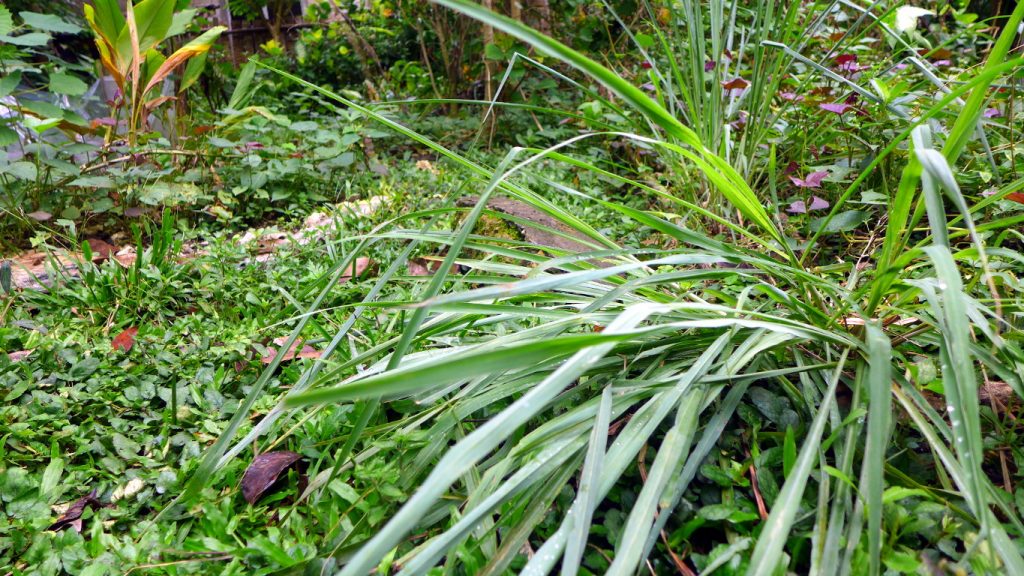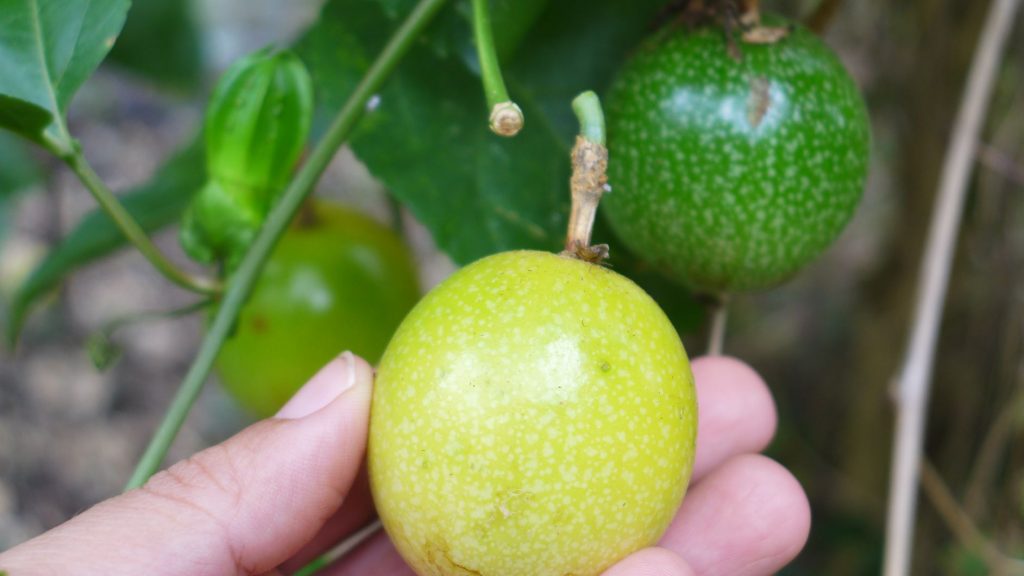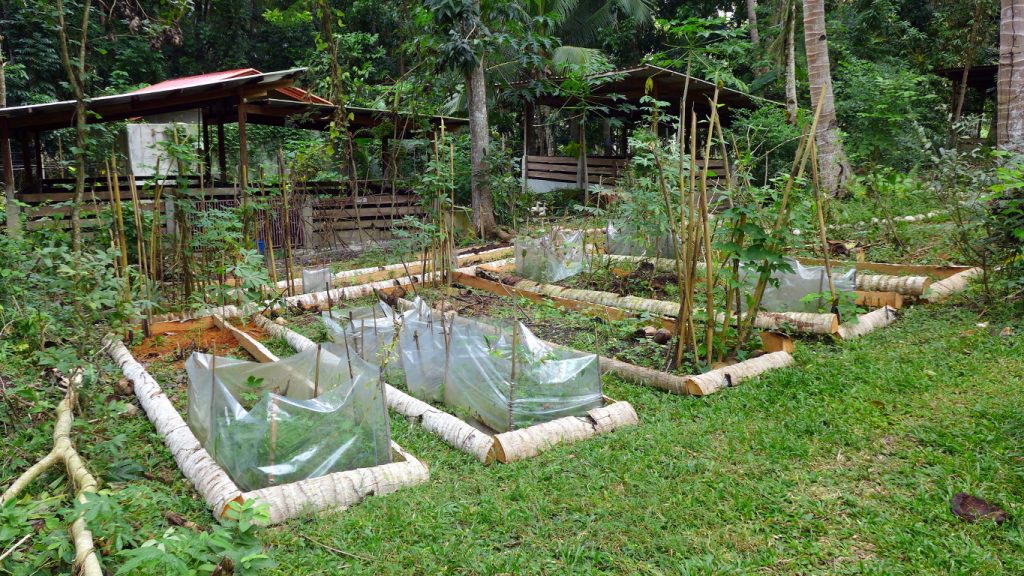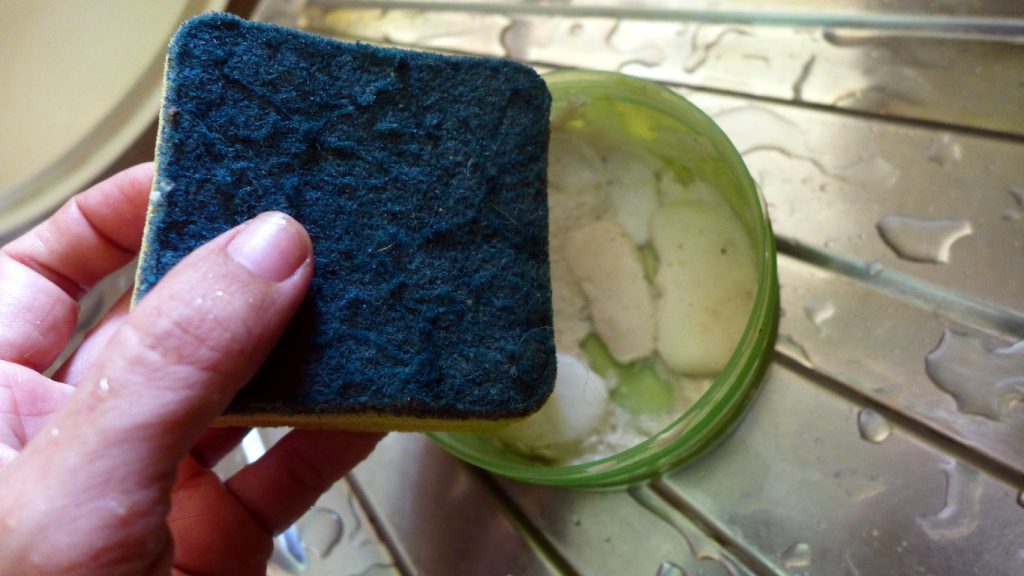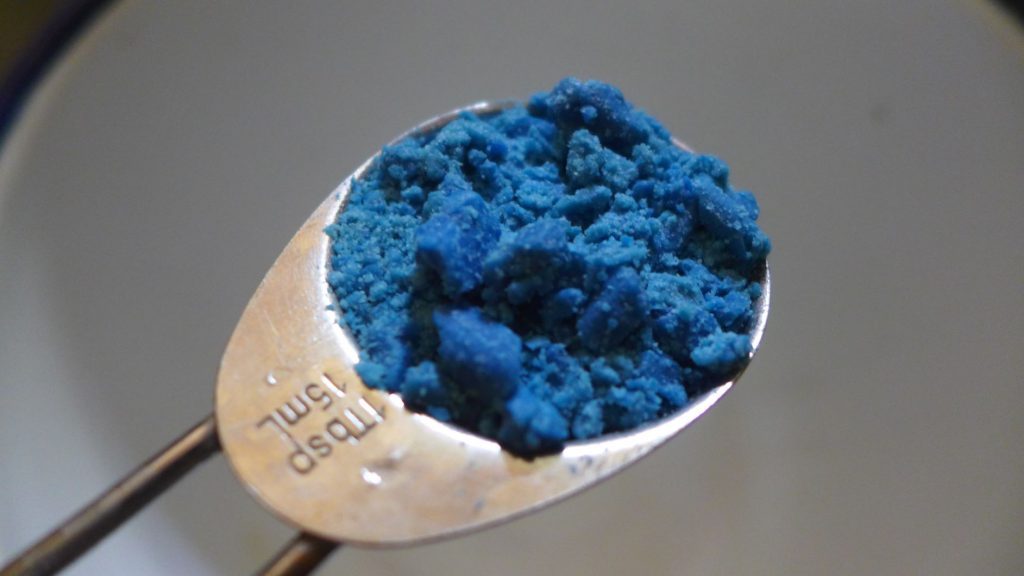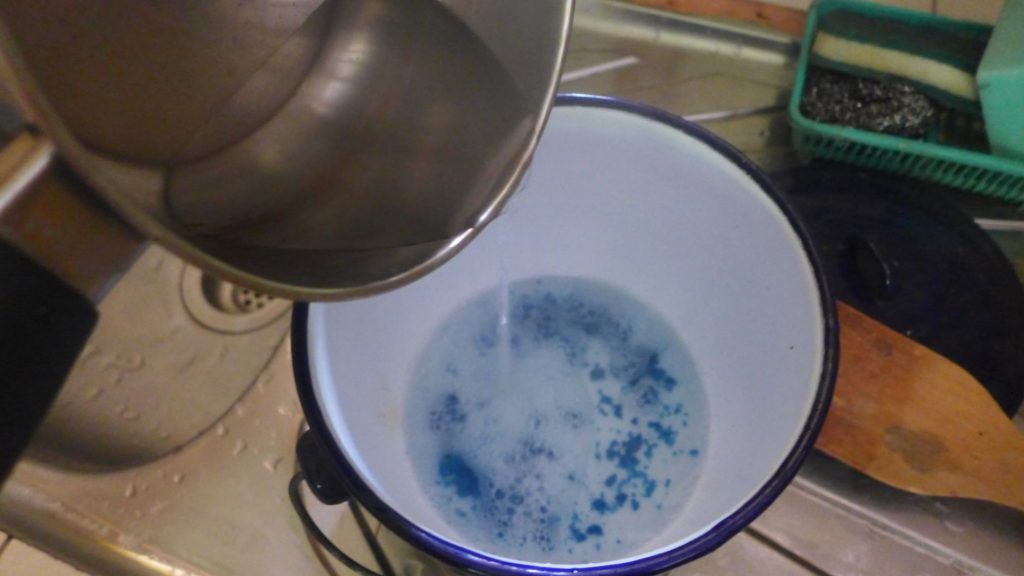Note: This is the first time we had to clip piglets’ teeth because Auntie Brownie, now on her third parity, got very angry whenever she nursed her piglets. No teeth cutting was needed on first and second parity. The months June-July were very hot and humid. I think this aggravated the problem of mastitis, making Auntie Brownie very sensitive to piglets’ teeth. This time, we also had a high crushing number of 4 piglets, with 12 live born piglets. 8 were weaned successfully.
Gestation 111 Days
Serviced by Pinky Boar on April 9, 2018.
Farrowed July 29, 2018.
During gestation, Auntie Brownie made loud grunting noises indicating call for bath. I gave her a few baths during high daytime temperatures. She also created a pit, cooled it with her urine and lay in it. Unfortunately, high humidity and dew point during these months didn’t help. We have changed feeds, employ wet feeding, installed an electric fan for Auntie Brownie’s next farrowing and see if we will get better results.
Nest Building

Nest building started a day before farrowing. I saw Auntie Brownie pawing the ground so I gave her some dry banana leaves. She took it and began nest building, then rested. She kept at this for the whole day, seemingly too lazy to build a satisfactory nest. This must be because of the heat and humidity.

Farrowing, July 29, 2018 at 10AM
The farrowing was without incident, 12 piglets born alive. However, within the first hour of birth, piglets started fighting which upset Auntie Brownie. Although fighting at the teats within a few hours of birth is not unusual, I found it unusual that Auntie Brownie got hurt so easily, and the fighting was frequent. I think that piglet fighting is an indication of poor milk flow. This may confirm the problem of mastitis or agalactia due to heat stress.

In the video above, Auntie Brownie is very tired and obviously having problems nursing her 1-day old piglets. Intervention is needed when this happens.
July 30 – 2 piglets were crushed to death and 1 was injured by overlaying. It seemed that Auntie Brownie was deliberately overlaying her piglets because she was hurt and upset by them fighting at her teats. Brownie’s teats seemed hard when I pressed them in the morning, but by late afternoon, her teats seemed much softer. It is possible that her teats were sensitive because of mastitis. I also wondered if the piglets’ teeth were sharper than the usual we’ve had before. I inspected the teeth of one of the dead piglets and I saw needle teeth that were thin and sharp, instead of the usual triangular shape with the pointed tip. Not all the piglet’s teeth are like that, and I am not sure if such teeth do make a difference.
July 31 – Teeth-clipping went well this morning, there are 9 piglets left. 1 piglet got crushed last night. Brownie drank water but did not eat. White discharge. Piglets went to the mother to suckle and the situation seemed better, although nursing is less frequent (every 1-2 hours); hoping later nursing will be on regular. I hope things progress from now on and that the mother quickly recovers.
August 1 – It is Day 3. Suckling is much more peaceful since teeth clipping. The injured piglet remains feisty and active. Piglets look forward to exploring the Escape Hatch/Restaurant/Garden after nursing, particularly brightens up sluggish piglets. The injured piglet seem to be the first to want to go out. Nursing was hourly and sometimes 15-30 min intervals. Brownie is drinking and eating well. She is getting Amoxicillin antibiotics in her water (for 3 days).

In the video above, piglets are 6 days old and go out into the garden several times each day, particularly after nursing.
August 5 – Piglet got crushed this afternoon. We were unable to revive it. This was a 7-day old piglet, very active and was seen fighting with litter-mates just a few hours ago. I believe this is accidental crushing, which happens when the piglet is unable to squeal so the mother is unaware that a piglet is being laid over. The piglet may have been very tired and was deep asleep.
The ground in front of the trough has become tough and slippery and this area seem to be where crushing fatalities often occur. This area will need to be dug up and wood shavings spread to soften the ground and reduce slipping.
In the video above, piglets are 11 days old. The piglet with the injured leg fights for milk. She is also the first one to go out of the escape hatch to play in the garden.
Video above shows Auntie Brownie interacting with her piglets, very much aware that I am filming her. With 4 or possibly 5 piglets crushed by the mother, the piglets have developed a very cautious relationship with their mother who at the same time is their source of life and nutrition. Through ambivalent socialisation with their mother, the ability of piglets to develop this alertness at the first few hours of birth is crucial to their survival.
Weaning the Piglets
September 3 – Auntie Brownie separated from her piglets, now about 38 days old. However, we put the runt with her, the one that got injured by crushing. We usually sell piglets at 45 to 55 days old, or after all signs of scour, if any, are gone. There was some scouring in this litter starting on day 2-3 after weaning which was treated with Apralyte. Because of early treatment, scours were gone in a few days.

The Problem of Crushing
For 2019, we are implementing changes which we hope will reduce the incidence of piglet mortality due to crushing. See Piglet Crushing Management.
Here are portraits of Auntie Brownie’s piglets.








































